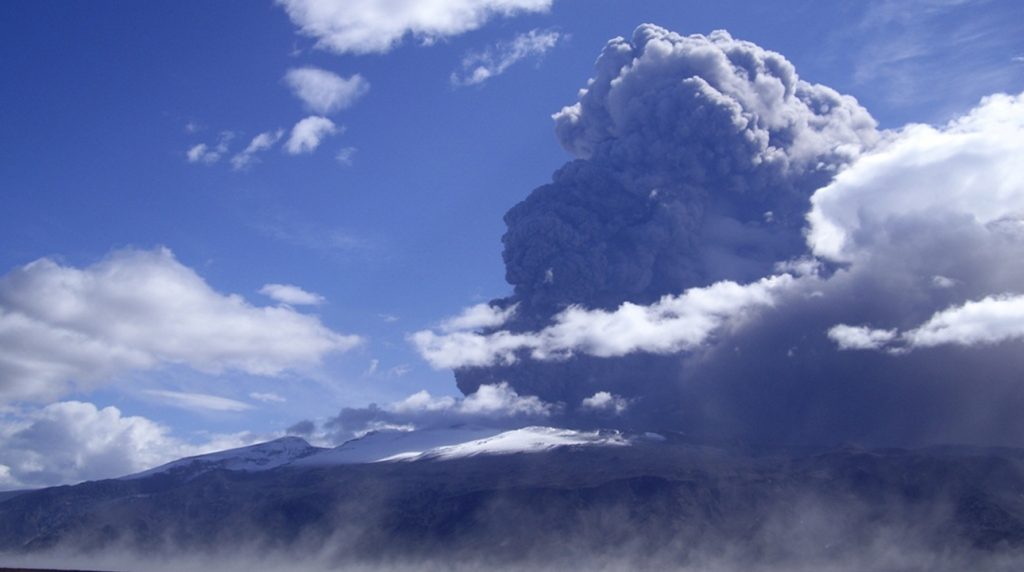
Eyjafjallajökull 2010: How Icelandic volcano eruption closed European skies
Ten years ago the Icelandic volcano Eyjafjallajökul erupted, sending a plume of volcanic ash over nine kilometers into the sky.
The eruption was relatively small but its impact was massive. Europe experienced air travel chaos for almost one month as much of the continent ground to a standstill.
Eyjafjallajökul’s eruption remains one of the most memorable events of the twenty-first century and is also one of the defining moments for our aircraft research team, who played a key role in reopening European air space.
The Eyjafjallajökul eruption
The ice-capped volcano started to erupt in mid-March, following several months of increased seismic activity in Iceland.
The first eruptions were isolated on the North-East flank, but problems started to arise in April when the eruptions spread to the centre of the volcano, a three kilometer-wide crater surrounded by ice.
As the ice started to melt, glacial water began flooding into the volcano where it met the bubbling magma at the centre of the eruptions. This rapid cooling caused the magma to shear into fine, jagged ash particles.
Large plumes of volcanic ash quickly spread above the volcano, moving eastwards with the jetstream towards the Faroe Islands, Norway, and northern Scotland.
Iceland responded by declaring a state of emergency and European airspace was closed as a safety precaution. It is estimated that airlines lost an estimated £130m every day that airspace remained closed, while millions of passengers were left stranded.
In order to reopen air space and reduce the economic impacts and disruption to travellers, the National Centre for Atmospheric Science was called in to map the volcanic plume.
Mapping the plume from the air and the ground
The ash plume contained large amounts of microscopic particles of hard volcanic rock, which can cause serious damage to any aircraft flying through.
Scientists from the National Centre for Atmospheric Science worked closely with the Civil Aviation Authority and the Met Office to track the plume and its contents using scientific instruments fitted to two research aircraft, alongside a series of computer models.
The FAAM Airborne Laboratory’s research aircraft was fitted with a special instrument that uses a laser to illuminate the ash particles from above. Another aircraft, a Dornier, flew below the plume to help map the ash.
The two aircraft were able to fly where commercial airlines could not, due to their ability to detect the volcanic plume via the research instruments on board.
To sample different layers of the plume, the aircraft flew up and down at heights between two and six kilometers. Meanwhile, scientists on the ground used computer models to build a picture of how the plume was moving.
“We used the NOAA HYSPLIT model to track the dispersion of the volcanic plume.” says Professor Stephen Mobbs, Executive Director of the National Centre for Atmospheric Science.
“This model tracks the trajectories of atmospheric pollutants from sources, using the observed wind fields as interpreted by global weather forecasting models.”
Dangers of volcanic ash to aircraft
Our response to the environmental emergency was pivotal in enabling passenger aircraft to return safely to the skies.
The volcanic ash was electrically conductive which meant it could cause thunder and lightning, or St Elmo’s Fire – an effect where metal parts of an aircraft start to glow. The airspeed indicator – which is essential for safe flight – can also be adversely affected making control of the aircraft very difficult. Dust is also likely to enter the aircraft, causing sulphurous smells and haze.
Professor Guy Gratton, Cranfield University
Professor Guy Gratton, Associate Professor in Aviation and the Environment at Cranfield University, says that volcanic ash could cause plane engines to seize:
“As they touch the aircraft, and particularly the engines, the hard rock particles can wear away the skin of an aircraft, its windscreens, and engine components. At the high temperatures inside a jet engine the particles can potentially block fuel nozzles or even melt and then solidify in other parts of the engine causing mishandling or engine stoppage.”
Future environmental emergencies
After the Eyjafjallajökul eruption, Professor Stephen Mobbs and Dr Susan Loughlin, Head of Volcanology at the British Geological Survey, were appointed to advisory groups set up by the UK government to respond to similar environmental emergencies in future.
Researchers continue to watch Iceland’s volcanoes, and have since returned on a mission to monitor gases – including carbon dioxide and sulphur dioxide – over the potentially most active volcanoes.
Recently, there have been peaks in these warning gases, which can indicate an eruption is on the way. There are several large volcanoes in Iceland, and when they erupt they are likely to have considerable effects across western Europe and beyond. One is Katla, which last erupted in 1918 and is widely considered to be overdue for an eruption.

25 responses to “Eyjafjallajökull 2010: How Icelandic volcano eruption closed European skies”